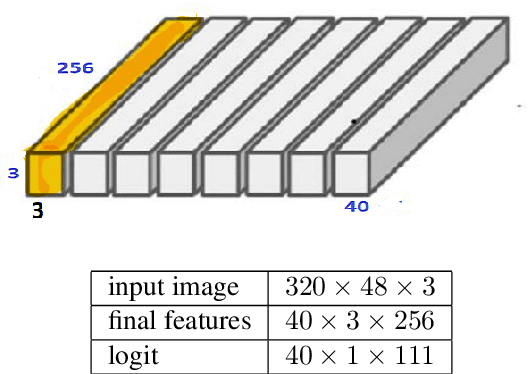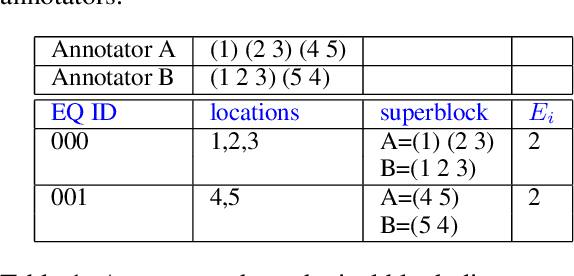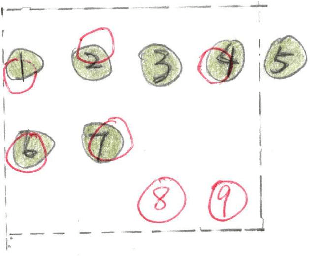Ankit Ramchandani
Jack
The Llama 3 Herd of Models
Jul 31, 2024Abstract:Modern artificial intelligence (AI) systems are powered by foundation models. This paper presents a new set of foundation models, called Llama 3. It is a herd of language models that natively support multilinguality, coding, reasoning, and tool usage. Our largest model is a dense Transformer with 405B parameters and a context window of up to 128K tokens. This paper presents an extensive empirical evaluation of Llama 3. We find that Llama 3 delivers comparable quality to leading language models such as GPT-4 on a plethora of tasks. We publicly release Llama 3, including pre-trained and post-trained versions of the 405B parameter language model and our Llama Guard 3 model for input and output safety. The paper also presents the results of experiments in which we integrate image, video, and speech capabilities into Llama 3 via a compositional approach. We observe this approach performs competitively with the state-of-the-art on image, video, and speech recognition tasks. The resulting models are not yet being broadly released as they are still under development.
SceneTextGen: Layout-Agnostic Scene Text Image Synthesis with Diffusion Models
Jun 03, 2024



Abstract:While diffusion models have significantly advanced the quality of image generation, their capability to accurately and coherently render text within these images remains a substantial challenge. Conventional diffusion-based methods for scene text generation are typically limited by their reliance on an intermediate layout output. This dependency often results in a constrained diversity of text styles and fonts, an inherent limitation stemming from the deterministic nature of the layout generation phase. To address these challenges, this paper introduces SceneTextGen, a novel diffusion-based model specifically designed to circumvent the need for a predefined layout stage. By doing so, SceneTextGen facilitates a more natural and varied representation of text. The novelty of SceneTextGen lies in its integration of three key components: a character-level encoder for capturing detailed typographic properties, coupled with a character-level instance segmentation model and a word-level spotting model to address the issues of unwanted text generation and minor character inaccuracies. We validate the performance of our method by demonstrating improved character recognition rates on generated images across different public visual text datasets in comparison to both standard diffusion based methods and text specific methods.
Lumos : Empowering Multimodal LLMs with Scene Text Recognition
Feb 12, 2024



Abstract:We introduce Lumos, the first end-to-end multimodal question-answering system with text understanding capabilities. At the core of Lumos is a Scene Text Recognition (STR) component that extracts text from first person point-of-view images, the output of which is used to augment input to a Multimodal Large Language Model (MM-LLM). While building Lumos, we encountered numerous challenges related to STR quality, overall latency, and model inference. In this paper, we delve into those challenges, and discuss the system architecture, design choices, and modeling techniques employed to overcome these obstacles. We also provide a comprehensive evaluation for each component, showcasing high quality and efficiency.
Animated Stickers: Bringing Stickers to Life with Video Diffusion
Feb 08, 2024



Abstract:We introduce animated stickers, a video diffusion model which generates an animation conditioned on a text prompt and static sticker image. Our model is built on top of the state-of-the-art Emu text-to-image model, with the addition of temporal layers to model motion. Due to the domain gap, i.e. differences in visual and motion style, a model which performed well on generating natural videos can no longer generate vivid videos when applied to stickers. To bridge this gap, we employ a two-stage finetuning pipeline: first with weakly in-domain data, followed by human-in-the-loop (HITL) strategy which we term ensemble-of-teachers. It distills the best qualities of multiple teachers into a smaller student model. We show that this strategy allows us to specifically target improvements to motion quality while maintaining the style from the static image. With inference optimizations, our model is able to generate an eight-frame video with high-quality, interesting, and relevant motion in under one second.
Text-to-Sticker: Style Tailoring Latent Diffusion Models for Human Expression
Nov 17, 2023



Abstract:We introduce Style Tailoring, a recipe to finetune Latent Diffusion Models (LDMs) in a distinct domain with high visual quality, prompt alignment and scene diversity. We choose sticker image generation as the target domain, as the images significantly differ from photorealistic samples typically generated by large-scale LDMs. We start with a competent text-to-image model, like Emu, and show that relying on prompt engineering with a photorealistic model to generate stickers leads to poor prompt alignment and scene diversity. To overcome these drawbacks, we first finetune Emu on millions of sticker-like images collected using weak supervision to elicit diversity. Next, we curate human-in-the-loop (HITL) Alignment and Style datasets from model generations, and finetune to improve prompt alignment and style alignment respectively. Sequential finetuning on these datasets poses a tradeoff between better style alignment and prompt alignment gains. To address this tradeoff, we propose a novel fine-tuning method called Style Tailoring, which jointly fits the content and style distribution and achieves best tradeoff. Evaluation results show our method improves visual quality by 14%, prompt alignment by 16.2% and scene diversity by 15.3%, compared to prompt engineering the base Emu model for stickers generation.
DISGO: Automatic End-to-End Evaluation for Scene Text OCR
Aug 25, 2023



Abstract:This paper discusses the challenges of optical character recognition (OCR) on natural scenes, which is harder than OCR on documents due to the wild content and various image backgrounds. We propose to uniformly use word error rates (WER) as a new measurement for evaluating scene-text OCR, both end-to-end (e2e) performance and individual system component performances. Particularly for the e2e metric, we name it DISGO WER as it considers Deletion, Insertion, Substitution, and Grouping/Ordering errors. Finally we propose to utilize the concept of super blocks to automatically compute BLEU scores for e2e OCR machine translation. The small SCUT public test set is used to demonstrate WER performance by a modularized OCR system.
DeepCOVIDNet: An Interpretable Deep Learning Model for Predictive Surveillance of COVID-19 Using Heterogeneous Features and their Interactions
Jul 31, 2020



Abstract:In this paper, we propose a deep learning model to forecast the range of increase in COVID-19 infected cases in future days and we present a novel method to compute equidimensional representations of multivariate time series and multivariate spatial time series data. Using this novel method, the proposed model can both take in a large number of heterogeneous features, such as census data, intra-county mobility, inter-county mobility, social distancing data, past growth of infection, among others, and learn complex interactions between these features. Using data collected from various sources, we estimate the range of increase in infected cases seven days into the future for all U.S. counties. In addition, we use the model to identify the most influential features for prediction of the growth of infection. We also analyze pairs of features and estimate the amount of observed second-order interaction between them. Experiments show that the proposed model obtains satisfactory predictive performance and fairly interpretable feature analysis results; hence, the proposed model could complement the standard epidemiological models for national-level surveillance of pandemics, such as COVID-19. The results and findings obtained from the deep learning model could potentially inform policymakers and researchers in devising effective mitigation and response strategies. To fast-track further development and experimentation, the code used to implement the proposed model has been made fully open source.
 Add to Chrome
Add to Chrome Add to Firefox
Add to Firefox Add to Edge
Add to Edge